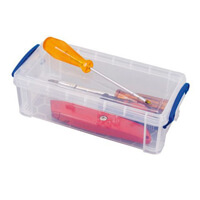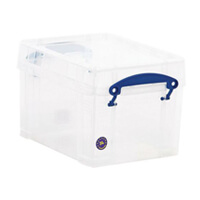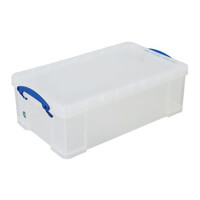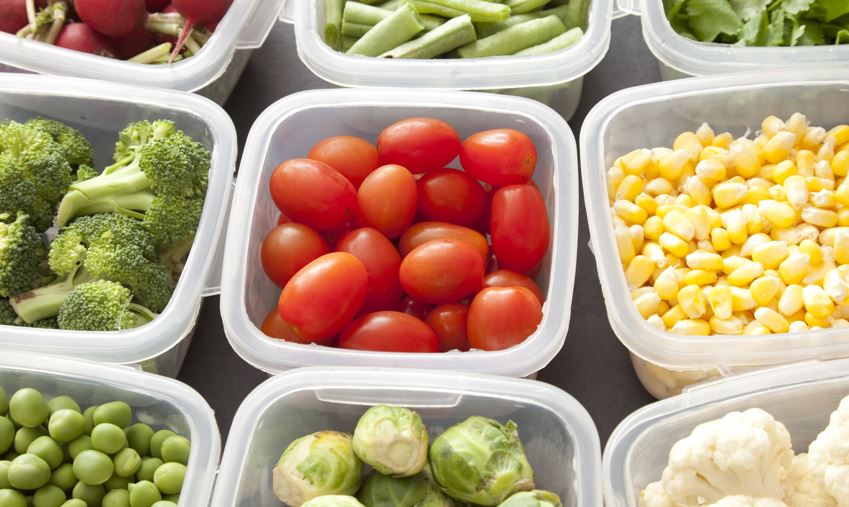Whether you’re transporting food in high quantities for an event or you’re simply bringing food with you to work, it can be tempting to use a plastic container as a method of storage. Using plastic containers for storing and transporting food does have its advantages over using things like tin foil and clingfilm, as it’s easier to seal your food in and keep it fresh, however, are you doing more harm than good by using plastic ahead of other suitable materials?
Is it safe to use plastic containers for food storage?
In reality, a lot of the food we eat is produced around plastic products, sold in plastic packaging, and any leftovers are left in a plastic container, so it’s hard to entirely avoid using the material. However, a very small, but genuine problem that could come from using plastic to store food arises when harmful chemicals are used as part of the material or the process of making the material. If your food is exposed to these chemicals, this could lead to potential harm to anyone that consumes the contaminated food.
Identifying plastics that are safe for use is an important starting point. For example, polyvinyl chloride (PVC), polycarbonate (PC) and polystyrene (PS) are worth avoiding, as dangerous chemicals are used in the process of manufacturing them. It’s not definite that these chemicals will directly taint the food you store in a container made from this material, but it’s advisable to avoid them.
As long as plastic containers aren’t created from any of these materials, you should be fine to use them for food storage, even if they may not be intended for it. Really Useful Boxes fall into this category as, even though they’re primarily intended for storing household items, they’re made from polypropylene, which is a type of plastic that’s recognised as being safe for food storage.
You could always play it safe and use a plastic container that has been created for storing food. Even if you do choose to do this, it would still be advisable to avoid microwaving food in the container. Although many of these plastics will claim to be oven or microwave safe, excessively heating up a container could lead to the plastic melting and releasing potentially harmful chemicals into your food.
The same can be said for using a plastic container for food storage immediately after washing it with hot water. By doing this, you could be triggering a similar reaction, and although this may not always be applicable, it’s best to wash plastic containers by hand rather than putting them in the dishwasher.
Some experts would go as far as saying that no hot or cooked food should be stored in plastic containers, but it should be safe to do this as long as it’s cooled before being put into the container.
Which plastic containers are safe for food storage?
In 1988, the Society of Plastics Industry (SPI) created a system that made it easier to tell apart each type of plastic. You’ll find this on plastic materials as being a recycling symbol with a number in the middle. Not only does this help to indicate the difference between each material and what they can and cannot be recycled with, but it also helps to identify which are safe for storing food.
Within this numbering system, plastics that are recognised as being safer for food storage are:
Polyethylene terephthalate (PET or PETE)
Often used for bottles of water, fizzy drinks and juice, PET is known as being safe for reuse as long as it’s thoroughly cleaned with hot water between uses. However, bottles and other products made from this type of plastic should be recycled when they become cracked or cloudy in appearance.
High-density polyethylene (HDPE)
A thicker type of plastic, HDPE is probably best known as being the material used for plastic milk jugs, but it’s also been used for food containers and other similar items.
Low-density polyethylene (LDPE)
As a thinner version of HDPE, LDPE is primarily used for kitchen materials like clingfilm, ketchup bottles and sandwich bags.
Polypropylene (PP)
Frequently used for plastic storage containers, PP is an ideal material for food storage as it’s safe, it doesn’t leak and it can be recycled.
Bio-plastics
Often regarded as being the ‘other’ category for plastics, bio-plastics include plastic utensils, cups and plates. They’re created from resources that have a high starch content such as potatoes, corn and sugarcane, so products made from this type of plastic are easily compostable.





Leave a Reply
You must be logged in to post a comment.